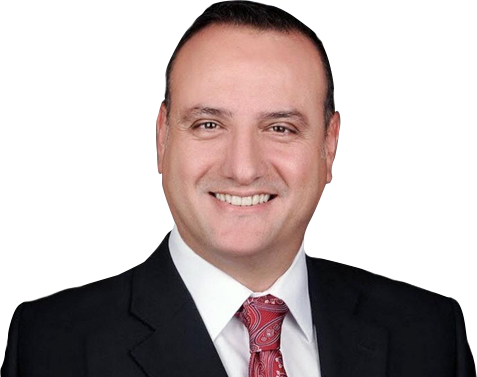
Who are Candidates of Diabetes Surgery?
Ileal Interposition is a surgical treatment method which was developed for treatment of type 2 diabetes. Metabolic Syndrome caused by type 2 diabetes is therefore the treatment target of Ileal Interposition operation. Elements of Metabolic Syndrome are Type 2 Diabetes, High Blood Pressure, High Lipid Levels (Dyslipidemia) and Obesity. High recovery rates are usual on all of these diseases after Ileal Interposition Surgery.
The clinical onset of different patients with type 2 diabetes, may vary in a wide range in terms of disease severity and associated organ damages. Onset age, duration of type 2 diabetes, medication need, insulin injection period, daily insulin dose, control level of blood glucose and many factors change severity of the disease. Ileal Interposition operation presents its effect by changing many different hormonal mechanisms and increasing production and effect of insulin. It decreases insulin resistance significantly, even eliminates. For these effects of ileal interposition, insulin production in pancreas should be preserved. The patients are evaluated with ”Mixed Meal Test” for beta cell activity to determine eligibility for Ileal Interposition surgery and also the extend of the control of the disease.
Assessment of Insulin Reserve of the Body
Before deciding on Ileal Interposition surgery, insulin production capacity of pancreas of patients with type 2 diabetes should be assessed in detail. Beta cells in pancreas are responsible for insulin production. The insulin production capacity of these cells via c-peptide levels in the blood are assessed. C-peptide is a protein chain. It exists as part of the same chain with insulin in preliminary insulin molecule. When the molecule is cleaved into two parts to create insulin, the remaining part is called c-peptide. So, c-peptide levels in the blood roughly provides information about insulin production, insulin production capacity of beta cells. The Mixed Meal Test is used to evaluate the patients.
Insulin levels of the patients, glucagon, resistin and cortisone which are main hormones of anti-insulinar system are analyzed during fasting and post-prandial when necessary.
Surgery that will be applied for type 2 diabetes is different from the surgery that will be performed for obesity. Procedures suggested and performed to provide weight loss only in an obese individual provide weight loss successfully. However, type 2 diabetes may not recover in all patients even they have obesity. The reason for that is insufficient assessment of reserves of the patients. When it is considered that the main target of obesity surgery is to provide weight loss, this is normal. Because, if recovery is obtained on additional diseases such as type 2 diabetes etc. after weight loss is achieved following obesity surgery, this is considered as additional gain. However, all patients with type 2 diabetes are not morbidly obese or even obese. Although such patients exist, periods with diagnosis of type 2 diabetes may be very long. In these cases, reserves of these patients may reduce and these patients may not control type 2 diabetes although they achieve excellent weight-loss.
Today, majority of patients with morbid obesity and type 2 diabetes who refer for obesity surgery prefer surgical treatment, because of type 2 diabetes which becomes very difficult to control and needs high dose insulin injections.
“All patients with Type 2 Diabetes may not be eligible for the surgery”
The severity of diabetes is not the same for all patients. Some of the patients are elder, some long durations of diabetes more than decades, some use drugs irregularly and are not followed-up. Most of these patients have significantly lower insulin productions. None of surgical procedures can provide benefit for type 2 diabetes for these patients.
The patient selection is guided by a scoring system, “Diabetes Remission Scoring System – DRS” that was defined by Dr. Surendra Ugale from Hyderabad India.
|
Parameter |
Score |
|||
|
|
1 |
2 |
||
|
Age of Diagnosis |
30 - 60 y/o |
< 30 y/o or > 60 y/o |
||
|
BMI |
> 30 kg/m2 |
< 30 kg/m2 |
||
|
Duration of Diabetes |
< 10 years |
> 10 years |
||
|
Insulin Use |
No |
Yes |
||
|
Microvasculer Complications |
No |
Yes |
||
|
Macrovasculer Complications |
No |
Yes |
||
|
c-peptides |
> 4 ng/dl |
< 4 ng/dl |
||
Seven parameters are considered including age of diagnosis, extend of excess body fat, duration of diabetes, need of insülin treatment, micro and macro vascular complications and c-peptide levels. The results are classified in two directions: beneficial or non beneficial. The lower points are given to beneficial results and higher ton on-beneficials.
The scoring is divided in to tree grades:
- Grade l (Mild) Diabetes: 7-10 points
- Grade ll (Moderate) Diabetes: 11-12 points
- Grade lll (Severe) Diabetes: 13-14 points
As the score increases, the disease severity increase and remission rates decrease. For higher DRS scores, the more potent surgical option should be selected which is Duodenoileal Interposition- Dll. Dll attenuates the duodenal anti-incretin hormonal response which increases insulin resistance (the Rubino’s factor) and GIP (Gastric Inhibitory Polypeptide) by excluding duodenum. Disruption or attenuation of GIP action is associated with decreased glucagon release, diminished weight gain, resistance to diet-induced obesity, and improved insulin sensitivity in preclinical studies. Also the distal ileal segment is gradually shifted more proximally when compared to Jll. This results with augmented GLP-1 stimulation and both Gastroileal Interposition with Bipartition- GIB and Duodenoileal Interposition- Dll have the same potency. Gastroileal Interposition with Bipartition- GIB is also much more potent than JII and RYGB in two ways: Foregut Supression (Functional Duodenal Exclusion) and Hindgut Stimulation (immediate distal ileal stimulation with undigested food).
Patient Based Modifications of Ileal Interposition:
Selective Hepatic and Pancreatic Nerve Dissections
High grade patients who have significantly low reserves, organ damages, increased load of medications, have decreased probablity to achieve a better control of fasting blood glucose. As the diabetes have a wide range of pathophysiologic factors, one of them is the stress response of the body. This is mainly due to symphatic activity which is leaded by glucagon. Glucagon basicly increases the hepatic glucose secretion and promptly elevates blood sugar easily. Glucagon secretion is controlled by symphatetic nerves.
Hepatic and pancreatic sympathetic nerves are selectively dissected and transected in some patients during Ileal Interposition Surgery to provide a better control of stress induced hepatic glucose production.
 English
English Turkish
Turkish

